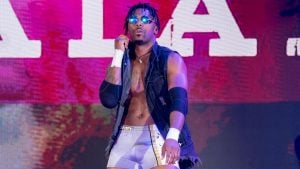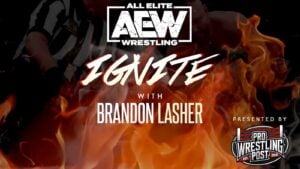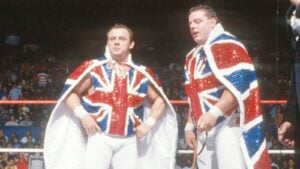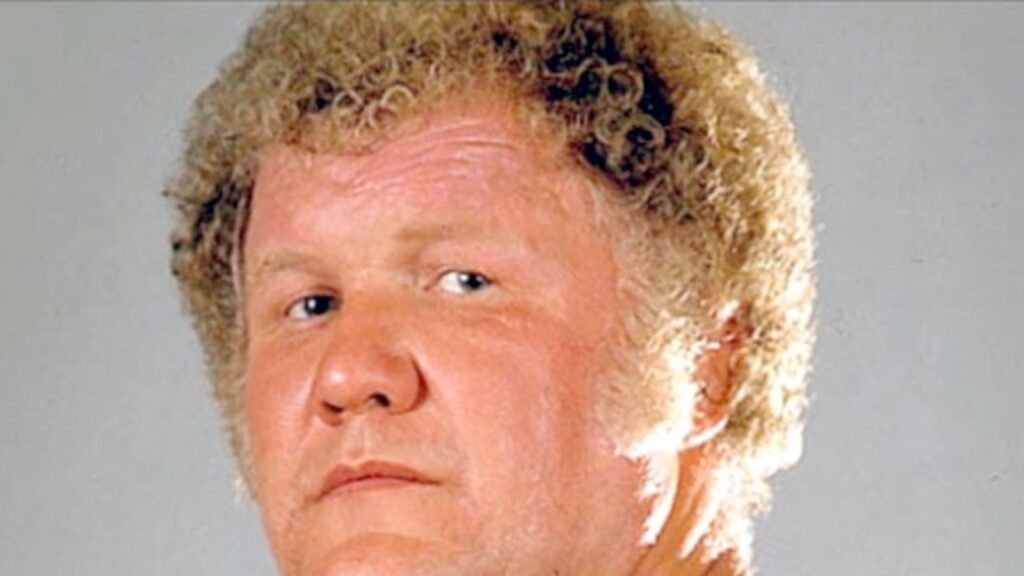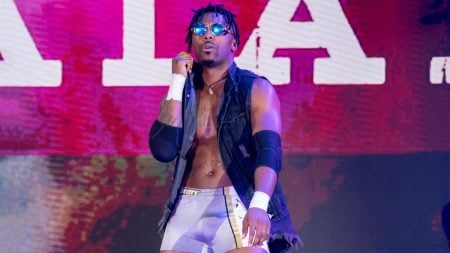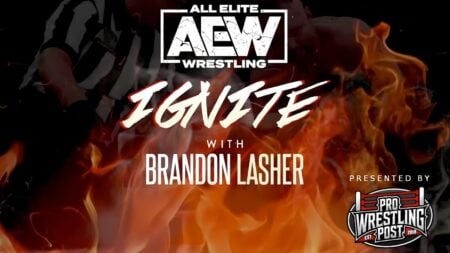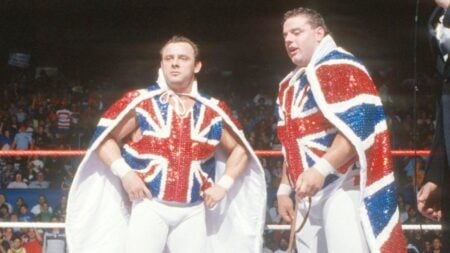In our previous installment on the life and career of Harley Race, “The Baddest Man on God’s Green Earth,” we looked into his long, slow, painful rise to the NWA World’s Heavyweight Championship.
Escaping a difficult family life at 16, Race went to work on a farm owned by the Zbysko brothers. From there, he began wrestling in the carnivals, earning $6 a match for 6 matches a night.
Later he would begin working for Missouri promoter Gust Karras, until a car wreck threatened to end Harley’s career just as it was getting started.
After a grueling recovery, Race teamed up with Larry Hennig, moving to Minnesota and capturing the AWA World Tag Team Championships. Feeling there was a ceiling over him, Race then moved to the NWA to pursue a singles career.
Through the 1970s, Harley Race became a staple of NWA programming in the Midwest. He held many regional and tag team titles, feuding with the likes of Dory & Terry Funk, Dusty Rhodes, and Thunderbolt Patterson.
After capturing his first NWA World’s Heavyweight Championship from Dory Funk, Jr in 1973, he became a perennial contender for the industry’s top title. Starting in 1977, his second reign with the 10 pounds of gold lasted a grand total of 926 days.
Over the following years, he would trade the title with Giant Baba, Dusty Rhodes, and Tommy Rich before settling on a new rival: Ric Flair. This is where we pick up the story, as we chart the peak and decline of Harley Race, “The Baddest Man on God’s Green Earth.”
Harley Race and Ric Flair – A Flair For The Gold
Ric Flair and Harley Race met for the first time in 1977, in a clash for Race’s World Heavyweight Championship. While Race had been in the industry for 20 years at that point, Flair’s career was just getting started.
Ric Flair made his in-ring debut in 1972, and just three years later, Pro Wrestling Illustrated named him ‘Rookie of The Year.’ By 1977, Flair was a mainstay of the NWA’s mid-card, holding the United States and Television championships several times.
Between first challenging for the championship in 1977 and finally capturing it in 1981, Flair and Race faced off 20 times, with the lion’s share of the matches ending in DQ or time-limit draws.
Indeed, when Flair finally captured his first World Heavyweight Championship, he did so by defeating Dusty Rhodes. It was clear that, while Flair held the title, Harley Race was the man he had to beat.
However, for many of their encounters during Flair’s initial title run, he could only beat Race by draw or DQ.
That all ended on June 10th, 1983, when Harley finally managed to pin Flair for the championship. What followed was one of the most intense rivalries in pro wrestling history.
Determined not to let the up-and-coming Flair near the title again, Harley Race issued a $25,000 bounty to anyone who could permanently injure ‘The Nature Boy.’
Among many who stepped up, only Bob Orton Jr and Dick Slater were successful, delivering a spike piledriver that allegedly broke Flair’s neck. A few weeks later, Flair would appear on NWA Television to announce his early retirement from the pro wrestling industry.
However, this was just a ruse, as Flair intended to get the drop on Orton and Slater a few weeks later. It was then that NWA officials scheduled the long-awaited rematch between their two hottest stars.
The championship was to be held inside a steel cage, with former NWA Champion Gene Kiniski as special guest referee.
The even bigger announcement was that this match would be available to all pro wrestling fans within the United States, as it would feature in the main event of the first nationwide closed-circuit supercard, an event named “Starrcade: A Flare For The Gold.”
Starrcade: Passing The Torch
By 1983, Vincent Kennedy McMahon had purchased the World Wrestling Federation from his father, with intent to bring the company to the national market.
Knowing that Race wouldn’t be happy dropping the title to Flair, McMahon offered the NWA champion $250,000 to drop out of Starrcade and bring the title with him to the WWF.
Race, being a man of principle, declined to leave the company that had invested so many years in his career. The inaugural Starrcade took place, as planned, on November 24th, 1983, in Greensboro, North Carolina, Flair’s home state.
Flair had advantage early in the match, but when Race took control, he focused his attacks on Flair’s injured head and neck. The two battled back and forth, trading piledrivers, before Flair applied his signature Figure Four leglock.
After Race broke the hold, he responded with his own signature Diving Headbutt, but Flair managed to kick out. The climactic finale saw Flair deliver a body press from the top turnbuckle, leading to a groggy Gene Kiniski giving a slow, dramatic three count.
And just like that, Flair captured his second World’s Heavyweight Championship, becoming the face of the NWA in the process.
Flair and Race would continue to clash over the course of 1984, as they battled throughout the territories and even internationally.
Harley would recapture the title in a match in Wellington, New Zealand, before dropping the belt back to Flair three days later in Kallang, Singapore. However, these title changes were not approved, and the NWA only occasionally recognizes them.
Having effectively passed the role of top NWA heel to Ric Flair, and unhappy with NWA President Sam Muchnik, Harley race decided to move to pastures new. And so, in 1986, he reached out again to Vince McMahon.
King Harley Race
Harley Race entered the WWF in May of 1986, as the newest member of the Heenan Family. Early in his WWF run, he would return to the “Handsome” Harley Race persona from his AWA days, bleaching his hair blonde again.
Race went undefeated for his first summer in the WWF, racking up wins over SD Jones, Lanny Poffo, Cousin Luke, and Tony Atlas. In spite of this winning streak, Race had trouble getting over in the family-friendly environment of the WWF.
Making matters more difficult was that the WWF refused to acknowledge any outside wrestling promotions. Without his impressive pedigree to fall back on, WWF decided to book Harley to defeat Pedro Morales to win the 1986 King of The Ring tournament.
Shortly thereafter, the WWF would hold a ‘coronation ceremony’ in which he would become ‘King’ Harley Race.
As part of the gimmick, he would enter to Mussgorsky’s “The Great Gate at Kiev.” Following his victories, Race would request his opponent to bow or kneel before him. More often, however, this would be accomplished by Heenan grabbing his opponent’s hair and forcing them to bow.
“King” Harley Race’s inaugural feud was with The Junkyard Dog, who refused to bow in his presence. This feud culminated at WrestleMania III, when Race and JYD faced off in a “Loser Must Bow” match.
Race pinned his opponent cleanly, but after Junkyard Dog bowed, he swiped Race’s regal purple cape and scampered away to a standing ovation.
A similar situation would occur later in 1987, when “Hacksaw” Jim Duggan took not only the cape but the crown as well. Harley Race would take his gimmicks back after an extended brawl at the 1987 Slammy Awards.
Through the summer of 1987, “King” Harley Race worked a program with Hulk Hogan over the WWF Championship in a series of matches at house shows and dark matches.
These matches were usually held under Texas Death Match rules, which were uncommon for the WWF in the 80s. In one of the earliest WWF table spots, Race attempted a diving headbutt to Hogan, who was lying on a table outside.
While the champion was able to get out of the way in time, the table did not break cleanly. The metal edge of the table pushed into Race’s abdomen, causing him to develop a hernia.
As was his way, Race opted to work through the injury, determined to make it to the opening battle royal at WrestleMania IV.
Following Race’s injury leave, Bobby Heenan lamented the loss of one of his biggest stars, and vowed he would crown a new “King.” A short while later, he would bestow the crown and robe to Heenan Family client Haku.
King Haku would have high profile feuds with Hulk Hogan and WWF Champion Randy Savage. When Harley Race returned from injury 6 months later, he would berate Heenan for failing to visit him in hospital before declaring Haku a pretender to the throne.
The duo would work a number of matches on the house show circuit before their feud culminated at the 1989 Royal Rumble.
As the two toughest men in the WWF squared off, Heenan seemed beside himself at ringside, unable to pick who he wanted to win more. In the end, Haku emerged victorious. Stripped of his gimmick, Race would quietly leave the WWF later that year.
Return to WCW
After leaving the WWF in 1989, Race would bounce around between far-flung promotions, wrestling for Stampede Wrestling in Calgary, World Wrestling Council in Puerto Rico, and All Japan Pro Wrestling.
While in Puerto Rico, he would capture his final wrestling championship, the Caribbean Heavyweight Championship from Miguel Perez, jr. Race would hold the championship from January 6th to March 4th, 1990.
It was during this time that he entered into negotiations with World Championship Wrestling, the new flagship promotion of the NWA.
In the time since Harley left, the former Georgia Championship Wrestling had undergone a series of changes under the guidance of new owner Ted Turner.
After he purchased Jim Crockett Promotions in 1988, Turner insisted he would maintain the athletics-oriented style of the NWA.
However, as time wore on, WCW began introducing more WWF-style gimmicks and storylines, such as RoboCop’s appearance at Capital Combat and The Black Scorpion storyline.
Little did Harley Race know that he was about to enter into a world similar to the one he just left.
Race returned to his former stomping grounds at the 1990 Great American Bash, chalking up a win over fellow NWA mainstay Tommy Rich.
The two former NWA World Heavyweight Champions would continue to work a program at house shows over the summer.
That same summer, Ric Flair would suffer an injury, leaving Barry Windham without a tag team partner. During this time, Harley Race would fill in for Flair, teaming with Windham to take on Sting and Lex Luger on the house show circuit.
In the fall, he would challenge for Lex Luger’s United States Heavyweight Championship on a number of occasions, and re-ignite his feud with the Junkyard Dog.
While Harley seemed to be settling into the closing act of his career, putting over the younger generation, a December house show match would put this chapter to an early end. In a match with Mike Rotundo (as Michael Wallstreet), Race sustained a shoulder injury.
While he had previously worked through all sorts of injuries, this would prove to be the straw that broke the camel’s back. Doctors urged the once indestructible man to retire from in-ring competition.
Post-Retirement
While his in-ring career had come to an end, Harley Race had been in the industry for over 30 years. With that kind of longevity came a great deal of wisdom, and WCW was not about to let that slip through their fingers.
Race returned to WCW just six months after his injury, initially as a guest referee in a 1991 St. Louis, Missouri house show.
He would return to television screens in the culmination of the 1991 Great American Bash, urging Lex Luger to execute the piledriver with which he would capture the vacant WCW World Championship.
This would spark the beginning of a manager/mentor relationship between Race and Luger, one that would last until Luger dropped the title to Sting at Superbrawl II.
This would be just the start of Harley Race’s managerial career, however, as he then began managing some of the largest men in WCW. This included Super Invader, Mr.Hughes, Vinnie Vegas, and Vader.
The stable would be short-lived, however, as it became clear that Vader was WCW’s top heel. Race’s relationship with Vader would lead him to capture the WCW Championship from Sting in July of 1992.
Harley Race would remain Vader’s manager for much of his final stretch with WCW, including during Vader’s main event feud with Ron Simmons.
During this time, Race courted with racial controversy after remarking that,
“When I was world champion, I had a boy like you to carry my bags.”
This was all planned by then-booker Bill Watts, who intended to garner sympathy for top babyface Ron Simmons, who would capture the WCW World Heavyweight Championship from Vader on August 2nd, 1992.
In 1993, he would try once more to form a stable, adding the masked Colossal Kongs and Yoshi Kwan to his roster. However, an untimely knee injury would see Kwan released from his contract, while the Colossal Kongs were ultimately released due to lack of interest.
Meanwhile, Vader remained among the top heels in WCW, and Harley Race would appear at his side until the end of 1994. In January of 1995, Race was involved in another car accident, this time requiring hip replacement surgery.
This would ultimately be the final straw for the wily veteran, as almost 40 years of accumulated injuries would prohibit him from even acting as a manager.
His final appearance for WCW would come four years later, as a special guest ring announcer for Bret Hart and Chris Benoit’s tribute match to the recently deceased Owen Hart on October 4th, 1999.
Outside the Ring
During his time in World Championship Wrestling, Harley Race became very popular among the new crop of talent. Future Hall of Fame inductees like Steve Austin and Mick Foley would often come to Harley for career advice.
He would remember this once his in-ring career had finally come to a close, and he wished to give back to the industry that had made him. So, in 1999, he would open Harley Race’s Wrestling Academy in Eldon, Missouri.
The following year, he would launch World League Wrestling, formerly World Legion Wrestling, as a local promotion for students to ply their skills and gain exposure.
The academy and WLW had a working relationship with Pro Wrestling NOAH in Japan, where such students as Ace Steel and Tomasso Ciampa gained valuable experience. Harley would run the school and promotion mostly by himself for the rest of his life.
Over the years, he would require a number of surgeries, including a second hip replacement, knee replacements, and five fused vertebra, all as a result of his decades in the ring. Even while in rehabilitation, Harley Race would not let anybody else run his business.
Over the course of his life, Race married four times. His first wife, Vivian, died in the 1960 car accident, after which, he was married to Sandra Jones.
His relationship with Sandra produced a daughter, Candice Marie. In 1962, Harley married his third wive, Evon, to whom he would remain married for 30 years.
Evon would give birth to Race’s son Justin, who would go on to a respectable amateur wrestling career.
In a fifth-season episode of Dark Side of The Ring, Evon recalled the difficulties of their marriage. Harley was on the road most of the year, and he brought much emotional baggage with him.
They were divorced in 1993. Two years later, Race would marry Beverly, vice president of the Commerce Bank of Kansas City. The two were particularly close, often traveling together. They would remain married until Beverly died of pneumonia in 2009.
In March 2019, colleague and rival Ric Flair announced that Race had been diagnosed with terminal lung cancer, which would eventually take his life in August of that year. Harley was buried next to his parents and brother in his hometown of Quitman, Missouri.
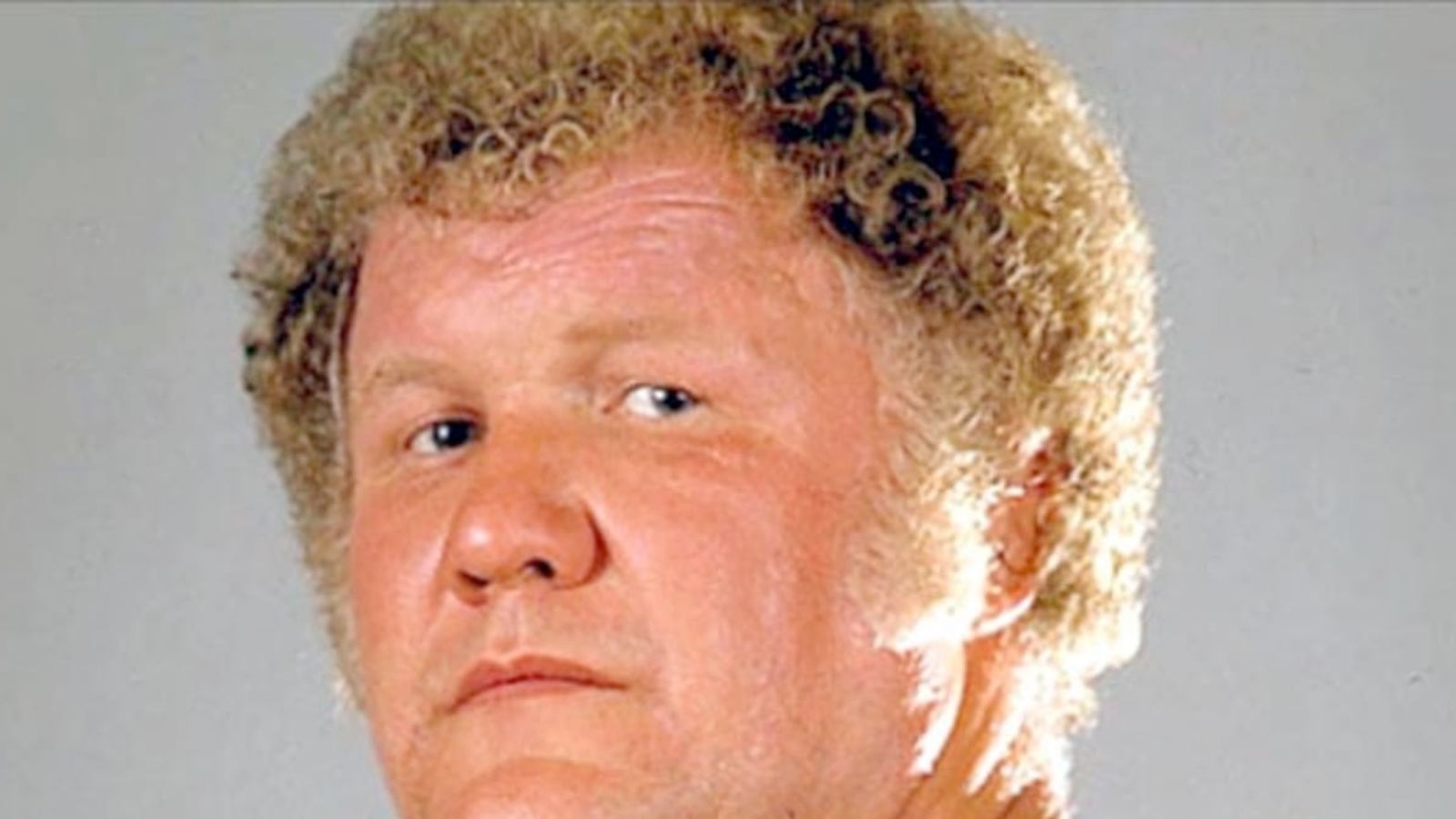
The Diving Headbutt
While Harley Race’s career is absolutely riddled with hard bumps and injuries, the man himself has been on record many times about his one regret: The Diving Headbutt.
Harley had used several finishing moves throughout his career, including a various suplexes and the piledriver. However, in the mid-70s, he began finishing matches with a falling headbutt.
Initially, he would deliver the move from a standing position, but as the years went on, he would begin taking off from the middle or top rope. While it certainly looked devastating, Harley’s opponents recall that he never hurt anyone with it.
However, Harley credits the maneuver for many of the injuries and surgeries he’s had over the course of his life. More than that, however, Harley’s regret came with others who had adopted the move as their own.
While his version saw him basically just fall from the top rope, others like The Dynamite Kid and Chris Benoit would push the envelope, making it more of a flying headbutt.
This twist on the form did their bodies no favors, as it rendered Dynamite Kid wheelchair-bound toward the end of his life, and played a major role in the demise of Chris Benoit.
Another famous practitioner of the flying headbutt is Daniel Bryan, for whom the move has caused a number of neck issues, which almost cost him his career.
Not to mention countless others who have injured themselves replicating the move. Such is the one regret of “The Baddest Man on God’s Green Earth.”
